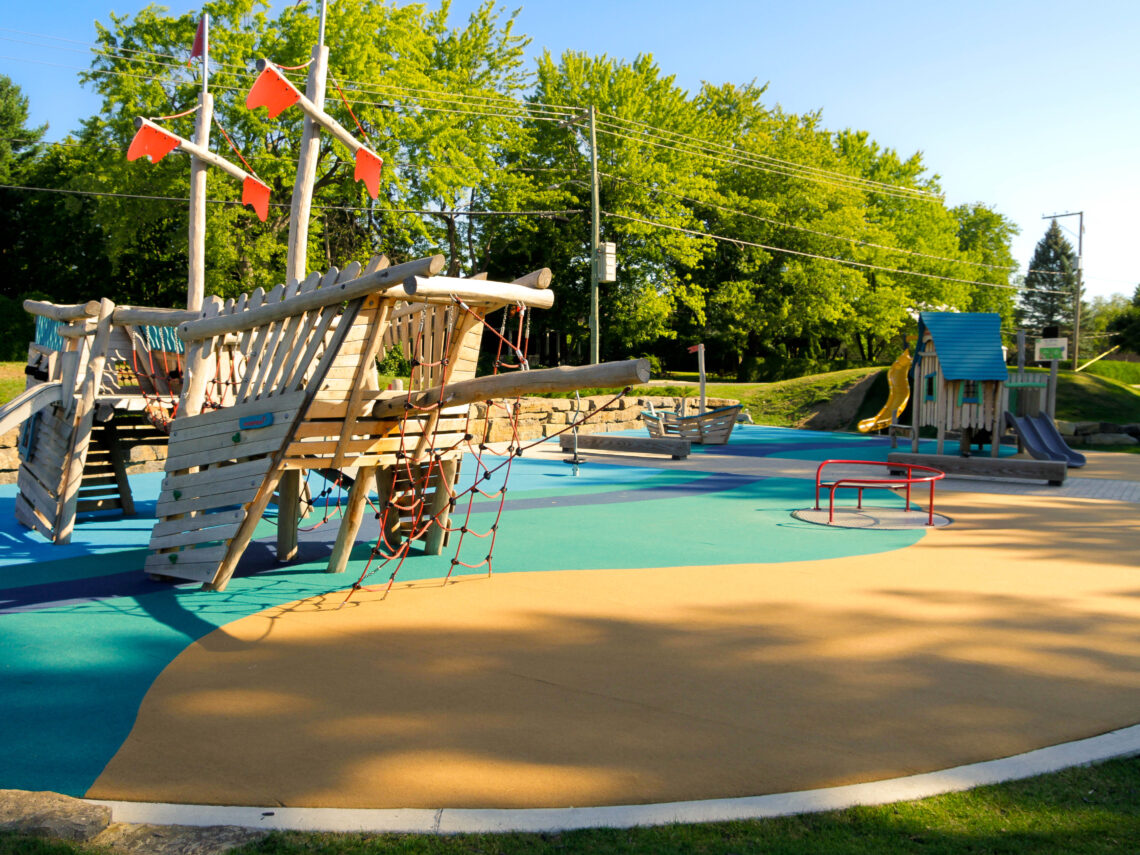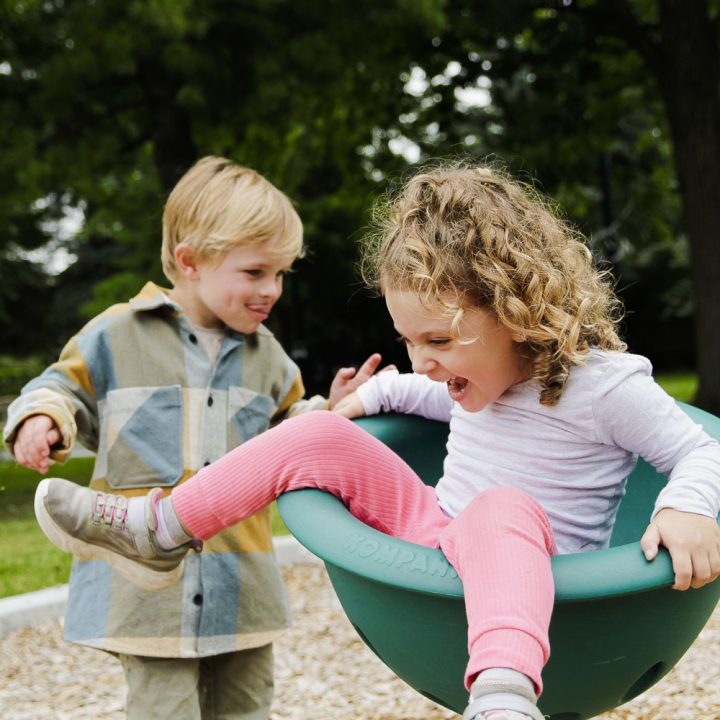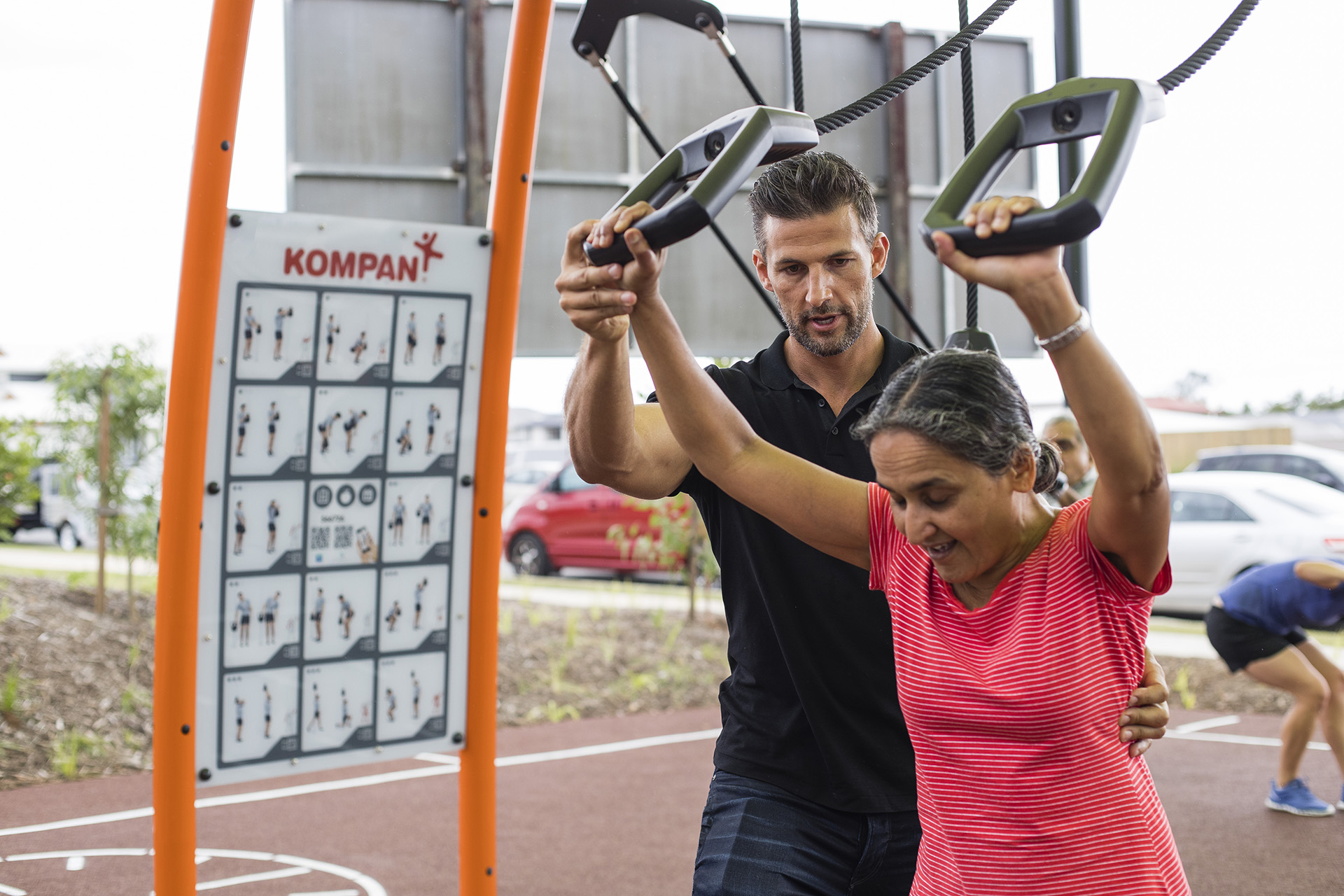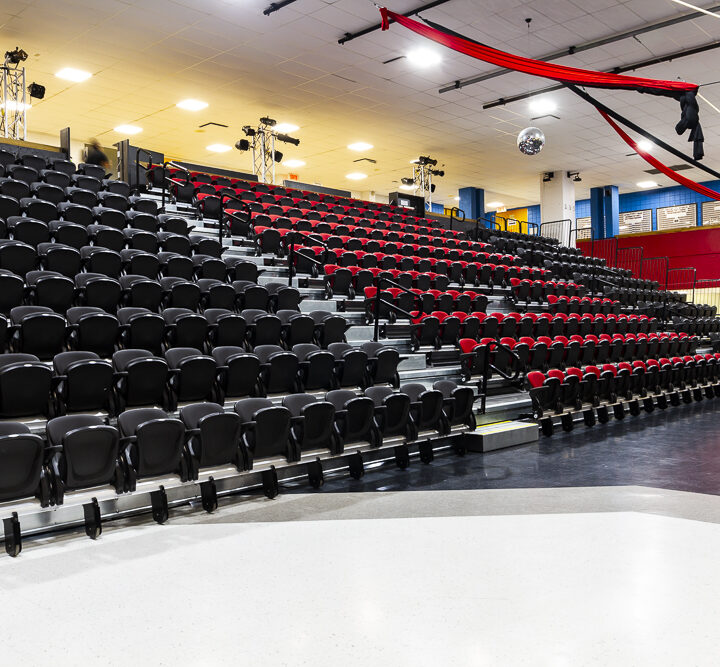Free translation of “NATURE PLAY AND NATURAL PLAYGROUNDS” by Dr. G. B. Suzanne Quinn, Director, KOMPAN Game Institute
What is nature play?
Nature play generally involves playing with natural elements such as plants and trees, water, earth, sand and stones. They take place outdoors, where children can feel the breeze, breathe the fresh air, observe the changing temperatures and seasons, and feel the warmth of the sun on their skin. Playing in nature excites all the senses through sights, sounds, textures, smells and tastes, as well as through physical challenges as the child moves through an outdoor space.
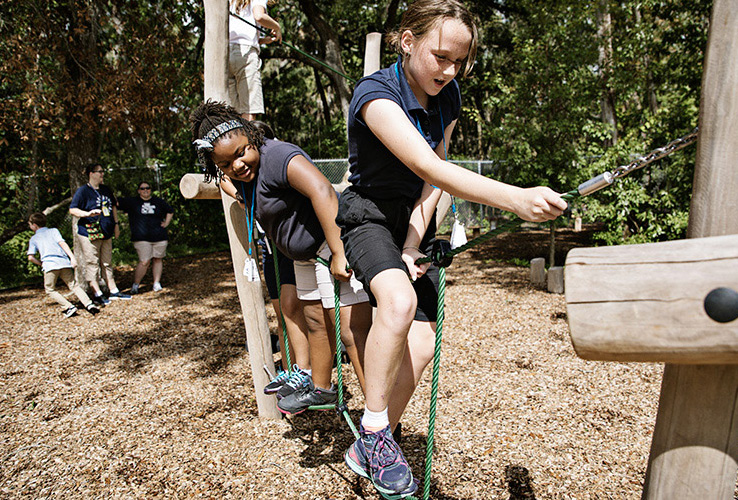
What is a natural playground?
The term “natural playground” can take many forms. Ideally, a natural playground is a naturalized environment that integrates nature into a space offering children the chance to discover different elements and move their bodies in a playful way. A natural playground is also a place where children play together, with their peers and across generations.
Design the space so that children can take risks, experience thrills and discover the qualities of natural materials that will interest and captivate them in the play area. In game design, variety of movement and gradation of challenge are key to keeping the game going. In addition to a variety of plants, shrubs, trees and non-toxic natural materials in the play area, there should be a variety of structures to support movement, such as climbing, swinging, turning, tipping, balancing and swinging.
These activities must be accessible and usable by people of all abilities. Transparent structures, such as climbing frames, are perfect for a natural playground, as they allow children to see through the structure from all angles, widening their view of the wonders of the natural landscape around them.
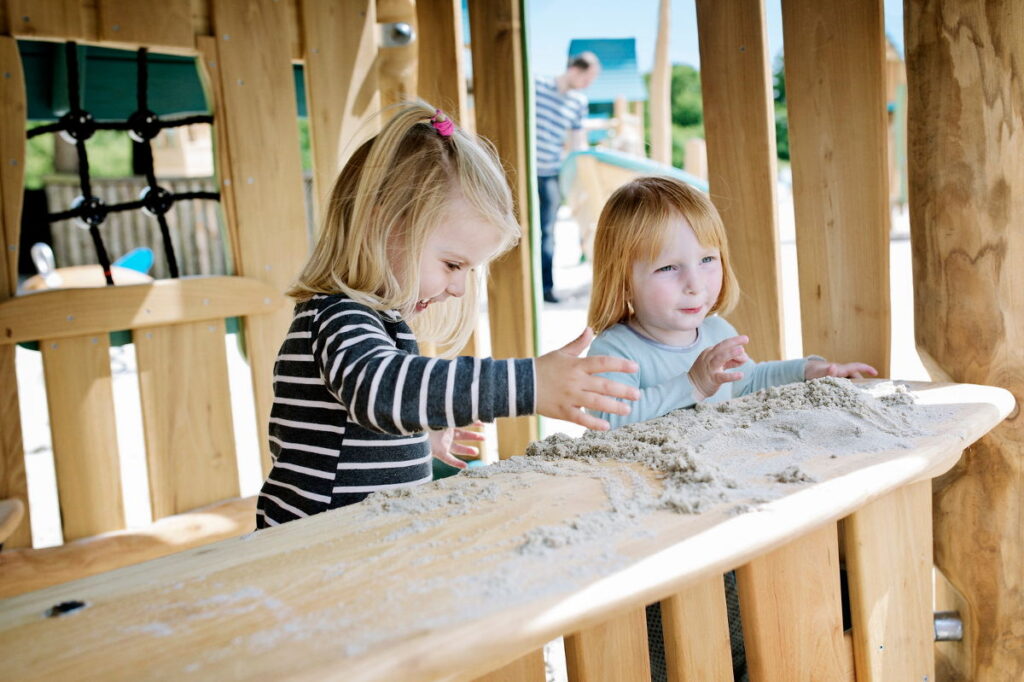
Why is outdoor play important for children’s development?
Experiences in nature and naturalized environments have beneficial effects on health, well-being and cognitive functioning (Bratman et al, 2012). For children, developing a connection with nature also supports their desire to participate in conservation efforts (Cheng & Monroe, 2012; Hughes et al, 2018; Wells & Lekies, 2006; Zylstra et al, 2014). A connection with nature requires direct, repeated experiences in natural or naturalized environments.
With their emphasis on fun, activity and socialization, natural playgrounds are perfect places to foster links with nature.
Advantages of natural playgrounds
Natural playgrounds attract children and their families to the great outdoors. Thanks to their meticulous design, these playgrounds enable children to play for long periods of intense activity, thus promoting their development. These playgrounds are important for several reasons:
- They help children learn about the local ecosystem
- They help children appreciate and care for the natural world
- They help reduce stress
- They help focus attention
- They encourage active body movement in a way that is not possible indoors.
Discover the Robinia range and the Robinia Mini range by KOMPAN, products designed for a unique, holistic approach to creating playgrounds in tune with nature!
The Robinia range is also available with FSC certification, providing information on the origin and traceability of our materials and further confirming our commitment to sustainable development.



